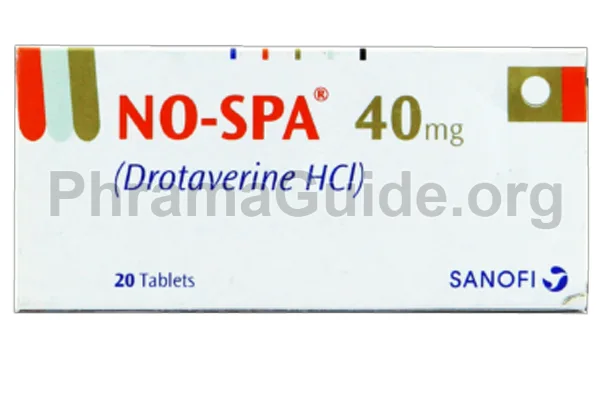No-Spa is a medication primarily used to treat various conditions involving smooth muscle spasms and pain, such as irritable bowel syndrome, menstrual cramps, and certain gastrointestinal conditions. Like all medications, No-Spa can have side effects. It’s essential to be aware of these potential side effects and consult with a healthcare professional if you experience any of them.
Common Side Effects of No-Spa May
- Nausea
- Vomiting
- Dry mouth
- Dizziness
- Headache
- Flushing or redness of the skin
- Increased heart rate (tachycardia)
- Low blood pressure (hypotension)
- Abdominal discomfort or pain
- These side effects are generally mild and temporary. If they persist or worsen, it is important to inform your healthcare provider.
Less Common Side Effects of No-Spa
- In rare cases, some individuals may experience more severe side effects or allergic reactions to No-Spa.
- Allergic reactions such as skin rash, itching, swelling of the face, lips, tongue, or throat (angioedema), or difficulty breathing.
- Severe hypotension (very low blood pressure), which may result in fainting or feeling lightheaded.
- Irregular heartbeat (arrhythmia).

What is No-Spa?
No-spa is one of the leading brands of Drotaverine, manufactured and marketed by Sanofi Pharmaceutical.
No-Spa : Available Formulations and Strengths
Presently, No-spa is available in Tablets and Injection forms
No-spa Tablet : 40mg strength
No-spa Forte Tablet : 80mg strength
No-spa Injection :40mg/2ml strength
What Are The Possible Drug Interactions of No-Spa?
- Alcohol: Combining No-Spa with alcohol may increase the risk of dizziness and drowsiness. It’s advisable to avoid alcohol while taking this medication.
- Other Muscle Relaxants: Concurrent use of other muscle relaxants or medications with muscle-relaxant properties can increase the risk of drowsiness, dizziness, and excessive sedation.
- Antihypertensive Medications: No-Spa can cause a drop in blood pressure (hypotension). When taken with antihypertensive medications, it can intensify this effect, leading to excessively low blood pressure. It’s crucial to monitor blood pressure and adjust medication doses under the guidance of a healthcare provider.
- Medications that affect heart rhythm (QT prolongation): Some medications, such as certain antibiotics, antipsychotics, and antiarrhythmics, can prolong the QT interval in the heart’s electrical cycle. Combining No-Spa with these drugs may increase the risk of irregular heart rhythms. Your healthcare provider should monitor your heart if you are taking these drugs together.
- CYP3A4 Inhibitors: Drugs that inhibit the enzyme CYP3A4 may affect the metabolism of No-Spa, potentially increasing its concentration in the bloodstream. This can lead to an increased risk of side effects. Be cautious if you are taking CYP3A4 inhibitors like ketoconazole or ritonavir.
- CYP3A4 Inducers: Medications that induce the CYP3A4 enzyme may reduce the effectiveness of No-Spa by speeding up its metabolism. Examples include rifampin and some anticonvulsants. Your healthcare provider may need to adjust your No-Spa dosage in such cases.
- Grapefruit Juice: Grapefruit juice contains compounds that can inhibit CYP3A4 enzymes, potentially increasing No-Spa’s concentration in the bloodstream. It’s generally advised to avoid consuming grapefruit or its juice while taking No-Spa.
- Other Gastrointestinal Medications: When taking No-Spa for gastrointestinal issues, be cautious when combining it with other medications used to treat gastrointestinal conditions, as there may be interactions

Leave A Comment